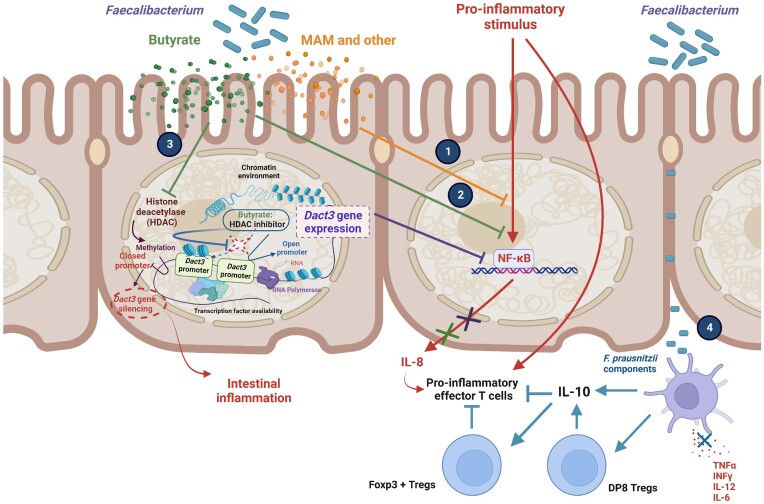Figure 5.
Mechanisms of action associated with Faecalibacterium. (1) Supernatant from Faecalibacterium cultures blocks the activation of NF-κB induced by a proinflammatory stimulus. (2) Butyrate produced by Faecalibaterium inhibits NF-κB activation and blocks Il-8 production in TNF-α stimulated intestinal epithelial cells. (3) Butyrate inhibits HDAC, leading to the expression of Dact3, a gene encoding a negative regulator of the inflammatory Wnt/JNK signaling pathway, and the inhibition of IL-8 production. It is important to note that the silencing of Dact3 leads to a partial loss of the anti-inflammatory effects of Faecalibacterium supernatant in the intestinal epithelial cells. (4) Faecalibaterium components can induce the appearance of a specific subset of IL-10-secreting Treg cells—called DP8 cells—in the colonic lamina propria. Moreover, the presence of Faecalibacterium can boost IL-10 levels in antigen-presenting cells and DP8 cells, which may enhance the suppressive activity of Foxp3 + Treg cells and block proinflammatory effector T cells induced by various stimuli.

